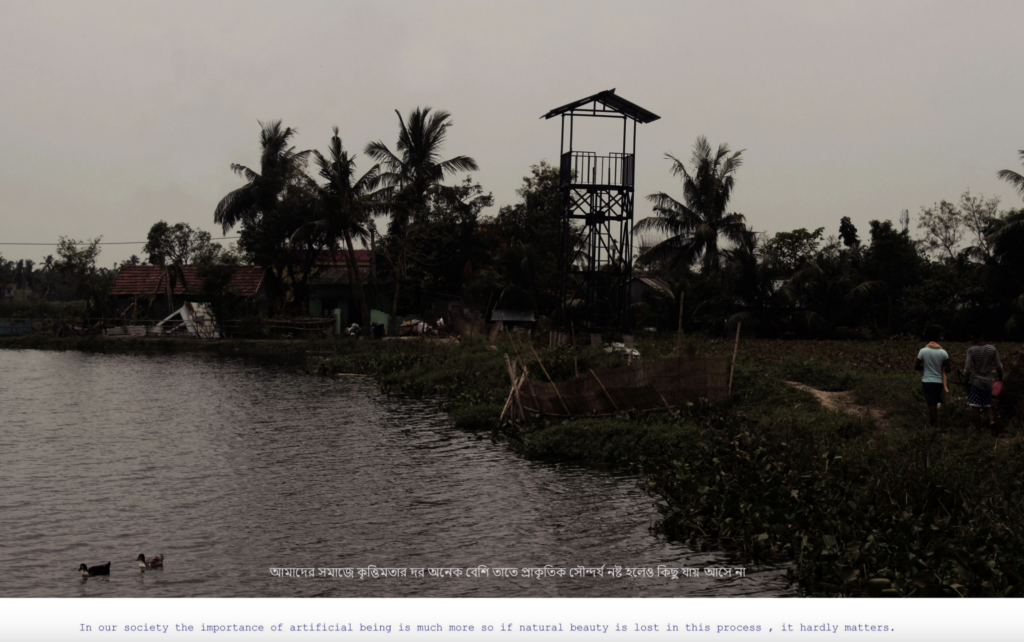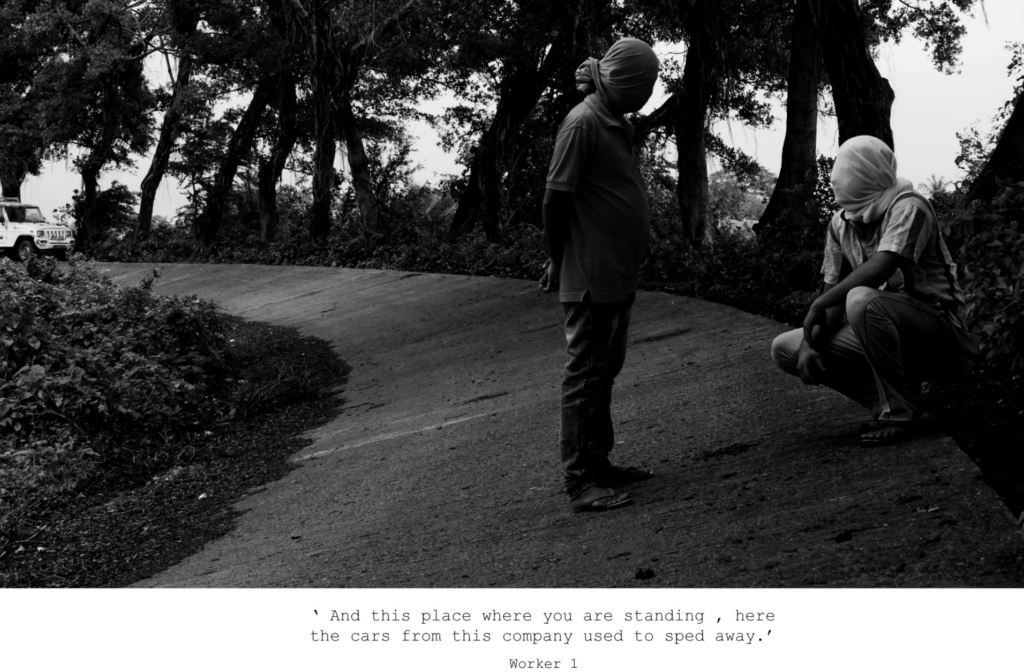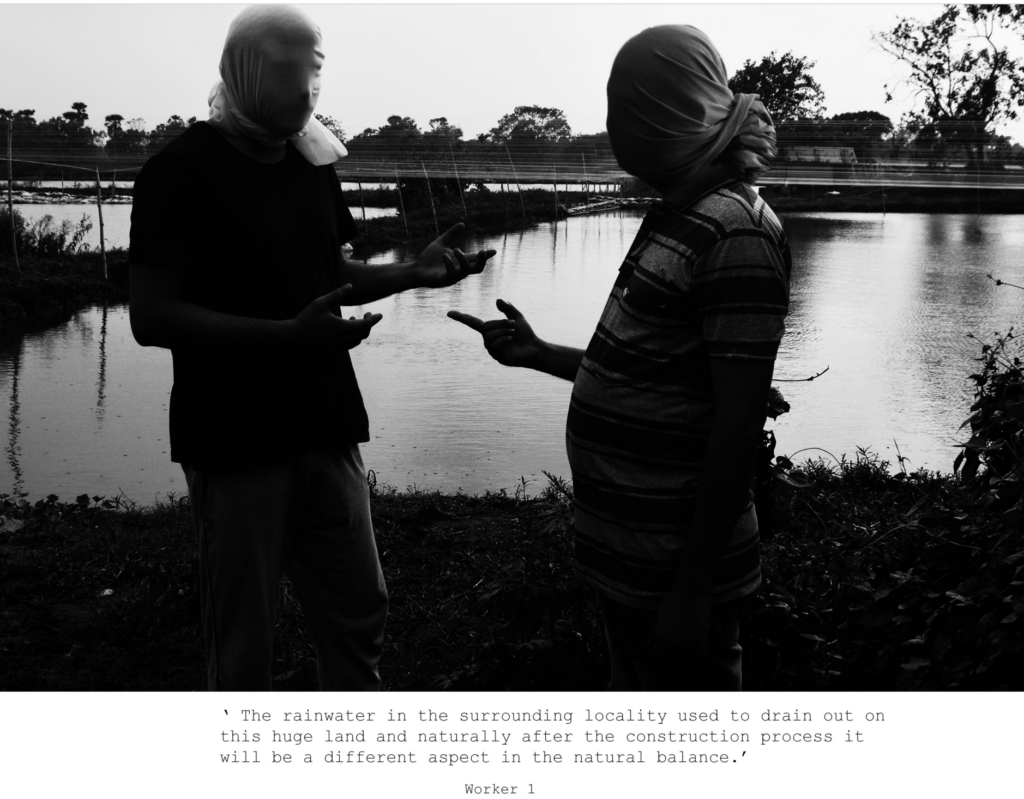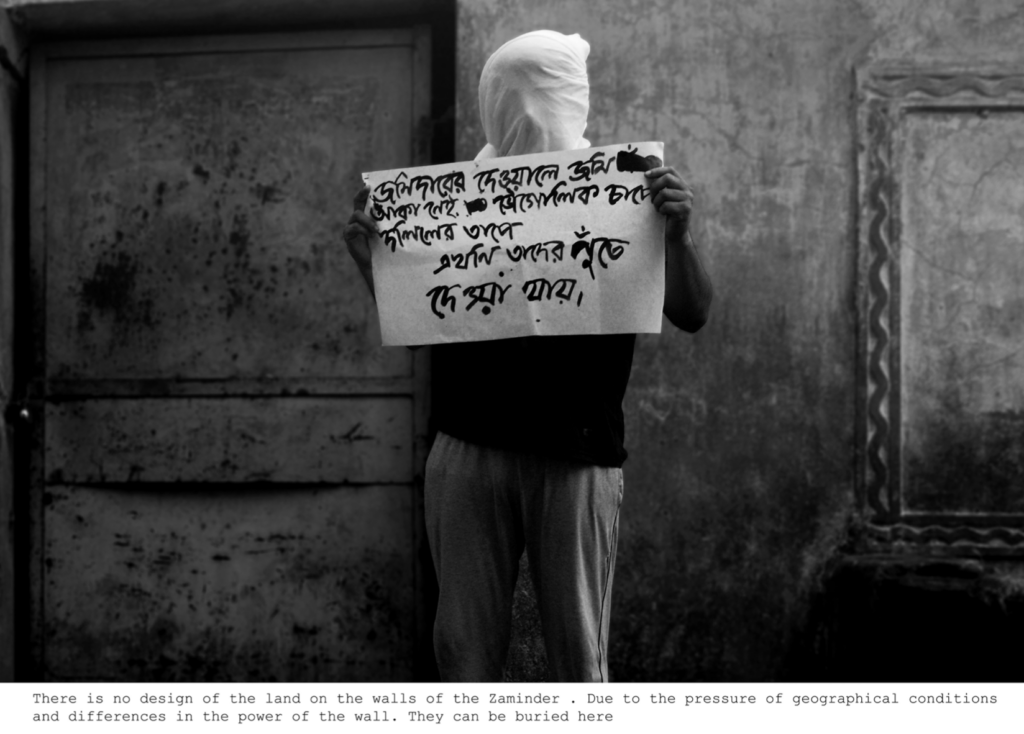‘Green Is Calling Back the Ancient Lost Greenery’ | Kolkata, India
Indian artist Prasanta Ghosh’s project "Green is Calling Back the Ancient Lost Greenery" thoroughly documents and poetically narrates an ecological breakdown close to his home. The project, recently exhibited at the Gandhara Art Gallery in Kolkata, powerfully calls out capitalism and its relationship
to the environment. Ghosh generously shares a synopsis of the project and its four parts with a few accompanying images of the exhibition and artworks, as well as links to follow for a deeper look.

Project Synopsis
I conceived this project, almost a year ago, to explore the changing scenario of both land and the surrounding society.
This is about the vast land which is adjacent to the Hindustan Motors factory, which exists on the fringe of our residential area. The land and the factory itself have a history of their own, which is gradually vanishing from our memories. The sudden shutdown of the factory in the last decade, and the transformation of the land around it, changed many small things that generally impact our lives in some way or the other.
Along with the factory, the company owned about 500 acres of land with water bodies and roads within it, where the Ambassador cars were tested. But this area is presently taken over by other real estate, converting the zone into a concrete sphere. Previously, the land with its water bodies and greenery maintained the ecological balance of the entire area.

Rallies, slogans, flag marching and meetings were held by the workers of the closed factory and became quite a common sight of our localities during my growing up days. We were the helpless onlookers who could only sympathize with these vulnerable jobless workers. Now, in the present time, a new view is visible of huge loaded trucks with cement and other material, which are continuously moving throughout the entire zone and occupying this huge land area that has been transformed into a concrete habitat. This sequence of events made me think about the way capitalism is consuming the society and the environment at such a slow pace. In spite of things being visible in front of our eyes, we cannot understand it.

I have divided my project into different layers. As the name suggests, I used the word ‘green’ within my project name allegorically. 'Green' as nature , 'Green' as land , 'Green' as youth, 'Green' as workers and 'Green' as a commoner . All these 'Greens' have a common craving within them--to stop the irreversible insensitive consumption which is growing at such a rapid pace that it fails to look back. I started visiting the site regularly to document the various dimensions of the land, the construction site, the old left-over workers' quarters and the outskirts of the closed factory. During my regular visits, I started writing on the spot, which began on a note of conversation that I was having with myself in the context of the changing and changed scenarios.

I have incorporated the different characters of workers within my text. The conversation gradually moved on to the impact of capitalism on the life of laborers and the life of a common person. I included various situations and effects which are generally overlooked. The text runs parallel to the documented images which move like a sequence in cinema. I collected various construction site sounds, which I used within my text. While moving deeper within the project another dimension opened up. I tried to portray how the workers of the factory were once consumed by capitalist conspiracies, akin to the present condition of the adjacent land that is being consumed by real estate in the same way.
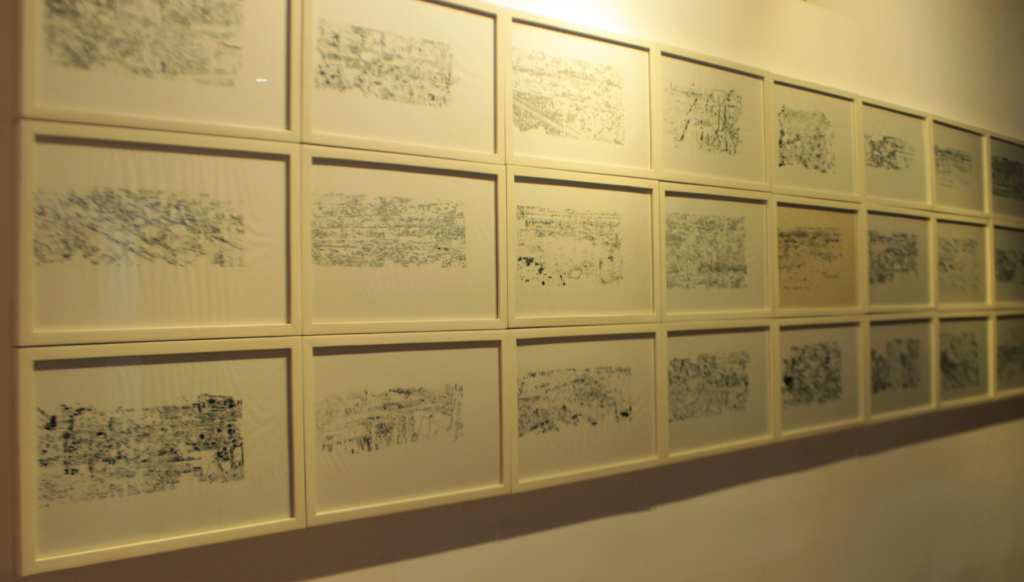
The project includes 80 archival prints, along with 21 drawing prints and 3 videos. I worked with fellow artist Shuvo Malik, documenting the conversation between two workers. Introductory text and a few representative images are provided for each part below. For the full set of images and videos, click on the links provided.
Part 1
Set of 24 images, archival prints, 12” x 18” (2021)
This set of images with documentation of the site, are displayed with text running parallel to the images in a conversational pattern. The conversation is between two selves who are witnessing the change, but only one of the selves has seen the past. Here the land is denoted as 742 acres of land, once owned by the now closed factory of Hindustan Motors. The rise of capitalism, the rise of real estate powers and the rise of political conspiracies seem to overpower the innocence of the land, the laborers, the farmers and even the animals who used to belong here.
Through the images, I explore the search that everyone who was associated with it is in search of and what will happen next: the search for what has been going on; the search for why, with sudden notice, they are being thrown out of their space; the search for the undefined, unknown future; and lastly, the search where everyone is calling for their beloved ‘green', whether it will return or not.
PART 2
Set of 47 images, archival prints, 12” x 18” (2021)
In this phase of work, I collaborated with Shuvo Malik for the onsite documented images. Here both the characters are shown as two workers who are having conversation on the idea of capitalism, its consequences and different scenarios. The fate of the Hindustan Motors factory workers gradually changed in the late 90s. Many took voluntary retirement due to financial pressure, causing a tension to develop within the workers' association that resulted in protests. From 1990 till around 2009 they fought for their freedom, their rights, and their work. This resulted in nothing but failure, oppression and conspiracy by the capitalists.
These events led to continuous protest, rallies and slogans, which were quite common in our entire area during my growing up days. The factory and the land are both part of the same area. What happened to the factory workers due to sudden shutdown is not very different than what is happening to the green land, which without nature’s consent is transformed into grey. Keeping this idea of oppression, the rise of capitalism and this claustrophobic situation in mind, I used pieces of cloth metaphorically to tightly cover faces.
PART 3
Set of 9 images, archival prints 12”x 18” (2021)
Here I stand amidst the land and its people, in the surroundings and within. With my text and words, my face covered: Here I am, not myself as an individual; here I am as the voice of the citizens who need to be heard; here I am as the voice of the workers who are always in an effort to be recognized; here I am as the voice of Nature whose land we took for granted to fulfill our limitless, unnecessary greed.
PART 4: The Future Ruins (2021)
Set of 21 drawings, inkjet print, pen, ink on tracing paper 8” x 11”
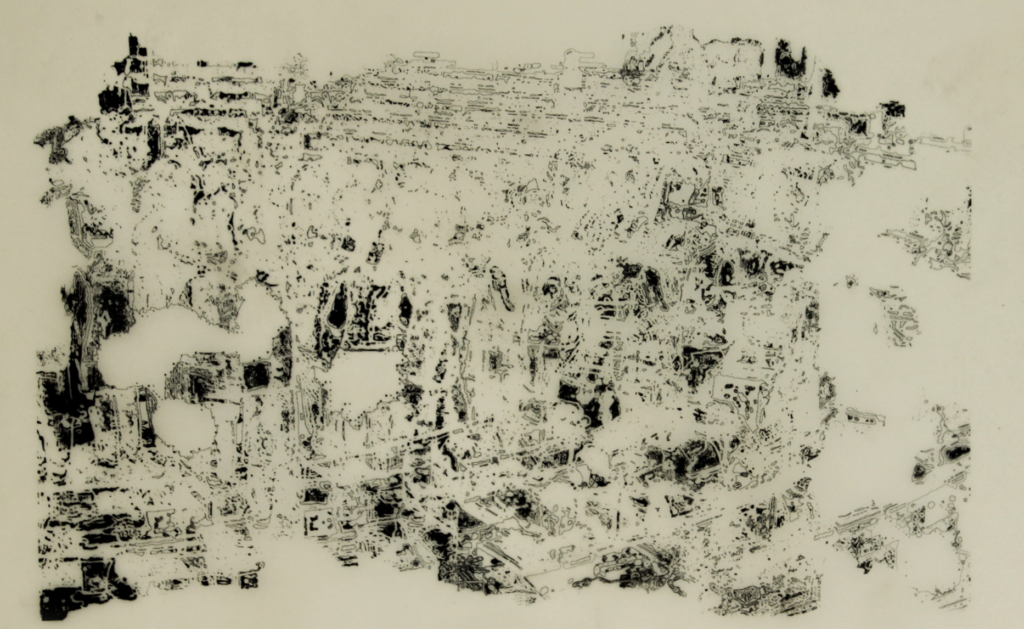
While visiting the entire site of the project, I kept on thinking about how the space is changing with the regular activity on the surface of the land, so I thought of rendering it in the form of scattered ruin drawings. The drawings keep in mind the depiction of a future where all surfaces of the land will be transformed into remnants, due to the growth of power in human society. Allegorically, it also represents the ruins of a certain class who seem to be as helpless as the silent land, who do not have the capacity to hold up in front of the overpowering ruling class.
ADDENDUM
...
Full set of images for each part of the project
Part 1 | Part 2 | Part 3 | Part 4
.Videos - performed, documented, and developed during the process of creating the project.
ABOUT THE ARTIST
Prasanta Ghosh completed his Masters from MSU Baroda in 2016 in Kolkata in interdisciplinary art practice. His recent solo exhibition “Green Is Calling Back
the Ancient Lost Greenery” at Gandhara Art Gallery in Kolkata. He received a Experimenter Cooperative Art Production grant from the Experimenter Art Gallery
for this project in 2020-21. In 2017, he received an award in the New Media category
at the 50th Annual Exhibition of the Birla Academy of Art and Culture.

